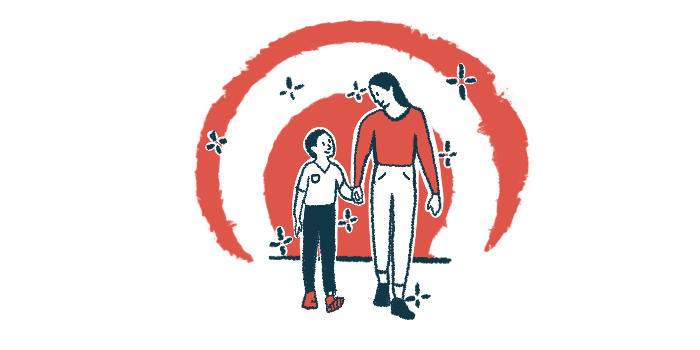Multidisciplinary approach used to treat chronic pain in boy with LOPD
Strategies included orthopedics, physical therapy, and psychosocial therapy

The use of a multidisciplinary treatment approach was described in a recent case report of a boy in the U.S. with late-onset Pompe disease (LOPD) and chronic pain.
The strategy consisted of orthopedics, physical therapy, and psychosocial therapy.
The boy also had behavioral and mood disorders, which could further exacerbate his pain, according to “Case report: Chronic pain in a pediatric patient with late-onset pompe disease,” which was published in Frontiers in Pain Research.
“This case highlights the need for a greater understanding of pain generation and identification of optimized pain treatment approaches in children with LOPD,” the researchers wrote.
Complexities of treating pain in LOPD
Pompe disease is caused by mutations in the GAA gene that lead to no or impaired acid alpha-glucosidase (GAA), an enzyme that breaks down the sugar molecule glycogen, being produced. As a result, glycogen accumulates, particularly in muscle cells, which disrupts their function.
LOPD typically begins after the first year of life and is marked by respiratory issues that develop slowly and muscle weakness in the limbs and trunk. Pain and related psychological symptoms typically receive less attention.
A research team from Harvard Medical School described the case of a boy with LOPD and a history of pain that started in his feet when he was about 6 years old. His primary care provider deemed it a normal growing pain.
He was also disruptive at school and his behaviors included attention deficit hyperactivity disorder (ADHD), being defiant and hostile toward others, called oppositional defiant disorder, and disruptive mood dysregulation disorder. The boy was treated with dexmethylphenidate and risperidone for behavior and mood regulation, and clonidine for sleep.
The pain got progressively worse over two years and extended to the hips and knees. It eventually affected the boy’s ability to stand for long periods or perform physical activity. He experienced fatigue, muscle weakness, and had difficulty walking.
Genetic testing identified two disease-causing mutations in the GAA gene and confirmed a diagnosis of LOPD when he was 9. Laboratory tests revealed elevated levels of creatine kinase, indicative of muscle damage, and of hexose tetrasaccharide, a biomarker of glycogen storage, as well as low GAA levels.
ERT with Lumizyme (alglucosidase alfa) was started shortly after diagnosis. By then, the boy had impaired muscle strength and function, and experienced coughing, wheezing, shortness of breath.
After 22 months of ERT, the boy and his mother reported considerable pain between the hips and feet, with increased severity in the right leg. The pain worsened when walking, standing, or sitting upright for long periods, but eased with rest. Physical symptoms were aggravated just before the ERT infusions, he said.
The boy was taking gabapentin, baclofen, and amitriptyline for pain, and pain and fatigue occurred during leg function tests, but not during arm and hand function assessments.
He was still on medications for ADHD and sleep, but had overcome the oppositional defiant and disruptive mood dysregulation disorders diagnoses. The boy was then diagnosed with major depressive and generalized anxiety disorders, and assessments showed high levels of depression, stress, anxiety, and sleep impairments, along with poor peer relationships and cognitive functioning. He scored low in a test of problem-solving and reasoning.
Treatment for psychological issues included medication and psychotherapy.
The child’s pain was considered multifactorial, requiring a multidisciplinary approach, which included a combination of physical and psychological therapies that emphasized improving function, rather than eliminating pain. No changes in his medication regimen were recommended.
The approach specifically “entails a re-training of the nervous system to subside afferent drive or lower pain, and equally important, provide the patient with behavioral tools and strategies to enhance the mind-body interface, learn coping skills, regulate emotional and behavioral regulation, and improve communication with care providers,” the researchers wrote.
Cognitive behavioral therapy, which included deep breathing, guided imagery, and stress reduction, was also recommended. Orthotic support of the feet, aquatic therapy, home-based exercise, and a stretching routine were indicated.
The researchers said their report illustrates the “complexities regarding the spectrum of pain symptoms patients with Pompe disease may experience,” but noted progress and treatment outcomes for the boy were not available.







